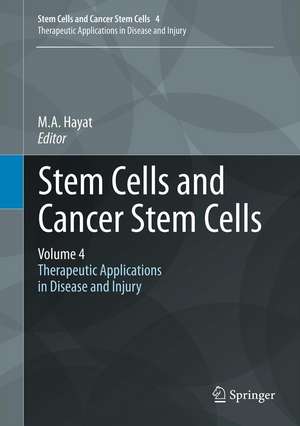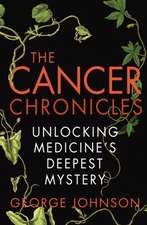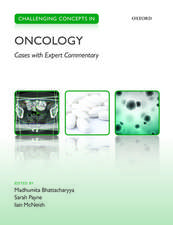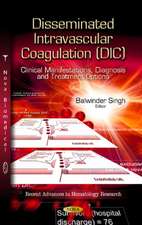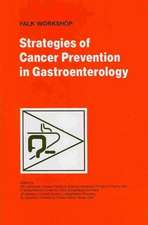Stem Cells and Cancer Stem Cells, Volume 4: Therapeutic Applications in Disease and Injury: Stem Cells and Cancer Stem Cells, cartea 4
Editat de M.A. Hayaten Limba Engleză Hardback – 9 feb 2012
| Toate formatele și edițiile | Preț | Express |
|---|---|---|
| Paperback (1) | 1306.43 lei 38-44 zile | |
| SPRINGER NETHERLANDS – 23 aug 2016 | 1306.43 lei 38-44 zile | |
| Hardback (1) | 1424.89 lei 6-8 săpt. | |
| SPRINGER NETHERLANDS – 9 feb 2012 | 1424.89 lei 6-8 săpt. |
Preț: 1424.89 lei
Preț vechi: 1499.88 lei
-5% Nou
Puncte Express: 2137
Preț estimativ în valută:
272.65€ • 285.43$ • 225.60£
272.65€ • 285.43$ • 225.60£
Carte tipărită la comandă
Livrare economică 05-19 aprilie
Preluare comenzi: 021 569.72.76
Specificații
ISBN-13: 9789400728271
ISBN-10: 9400728271
Pagini: 500
Ilustrații: XIX, 319 p.
Dimensiuni: 178 x 254 x 15 mm
Greutate: 0.79 kg
Ediția:2012
Editura: SPRINGER NETHERLANDS
Colecția Springer
Seria Stem Cells and Cancer Stem Cells
Locul publicării:Dordrecht, Netherlands
ISBN-10: 9400728271
Pagini: 500
Ilustrații: XIX, 319 p.
Dimensiuni: 178 x 254 x 15 mm
Greutate: 0.79 kg
Ediția:2012
Editura: SPRINGER NETHERLANDS
Colecția Springer
Seria Stem Cells and Cancer Stem Cells
Locul publicării:Dordrecht, Netherlands
Public țintă
ResearchCuprins
I. Molecular genetic.-1 Neural stem/progenitor cell proliferation and differentiation: role of sonic hedgehog and wingless/int-1 proteins.-2 Sensitivity of hematopoietic and leukemic stem cells to hoxa gene levels.-3. Maintenance of neural stem cells in the brain: role of notch signaling.-4 Maintenance of hematopoiesis: role of early b cell factor 2 matthias kieslinger.-5 Differentiation of periodontal stem/progenitor cells: roles of tgf-β1.-6 Induced pluripotent stem cells from human extra-embryonic amnion cells: role of dna methylation in mainting stemness.-7 Smooth muscle cell differentiation from embryonic stem cells: role of hdac7 and pdgf-bb.-8 Adult neural stem cells; identity and regulation. II. Regenerative Medicine.-9 Tendon injury: role of differentiation of aduilt and embryonic derived stem cells.-10 The potential of stem cells and tissue engineered scaffolds for repair of the central nervous system.-11 Improving the efficacy of diabetes mellitus treatment by combining cell replacement therapy with immune correction.-12 Induced pluripotent stem cell production and characterization: an overview of somatic cell reprogramming.-13 Proliferation of bone marrow-derived human mesenchymal stem cells: role of enamel matrix proteins.-14 Pluripotent cell-derived glial precursor cells for the delivery of therapeutic proteins to the central nervous system.-15 Cellularized scaffolds: new clothes for cardiac regenerative medicine.-16 Microencapsulation procedures for the immunoisolation of wharton’s jelly mesenchymal stem cells: a review. III Therapy.-17 Human hair follical stem cells: markers, selection and perspective clinic application.-18 Adipose-derived stem cells: therapy through paracrine actions.-19 Mesenchymal stem cell-natural killer cell interactions.-20 Malignant gliomas: treatment using genetically-modified neural stem cells.-21 Thecancer stem cell hypothesis and its impact on the design of new cancer therapies.-22 Breast cancer stem cell: translating to the clinic.-23 Enhanced growth and metastasis of colon cancer: role of mesenchymal stem cells.-24 Proteomic characterization of mesenchymal stem cell-like populations derived from various tissue types. IV Transplantations.-25 Severe combined immunodefieciency patients: immune recovery after stem cell transplantation.-26 Transplanted mesenchymal stem cells aid the injured brain through trophic support mechanisms.Index.
Textul de pe ultima copertă
It is difficult to overstate the potential applications of stem-cell biology to our understanding of, and responses to, disease and injury. This volume aims to bring to its readers authoritative and responsive coverage of aspects of the field that will keep them up-to-date in a fast-moving scientific landscape. The fourth volume in the series on stem cells and their cancer-carrying counterparts, this book sets out the plethora of therapeutic applications offered by a group of specific stem cells in tackling disease and tissue injury. The list of subjects includes embryonic, induced pluripotent, human hair follicle, bone marrow-derived human mesenchymal, adipose-derived, cancer, and breast cancer stem cells, in addition to periodontal/progenitor cells. The adaptability of human embryonic stem cells, which have the potential to develop into any cell type, ensures them an especially detailed treatment.
Contributions explore the causal influence of cancer stem cells in malignancies such as cancer and breast cancer, and delineate the way mesenchymal stem cells contribute to the growth and metastasis of colon cancer. Shifting from disease to treatment, the text explains the therapeutic value of transplanting mesenchymal stem cells to the injured brain as an aid to its recovery. It includes material, too, on the exciting prospect of valuable new targeted cancer drugs borne of our increasing understanding of the molecular pathways peculiar to tumor biology. Key topics, such as the benefit of stem cell transplantation to immune system recovery among severe combined immunodeficiency patients, and the treatment of malignant gliomas using genetically modified neural stem cells as markers, provide a window on cutting-edge work in these specialized subjects. The extensive scope and detailed analysis of this volume, and of the series to which it belongs, mean that whether readers want a breakdown of the impact being made bycancer stem cell research on the design of next-generation cancer therapies, or details of the way stem cells could transform regenerative medicine by repairing damage to vital organs and tissues, they will find these—and much more—here.
Contributions explore the causal influence of cancer stem cells in malignancies such as cancer and breast cancer, and delineate the way mesenchymal stem cells contribute to the growth and metastasis of colon cancer. Shifting from disease to treatment, the text explains the therapeutic value of transplanting mesenchymal stem cells to the injured brain as an aid to its recovery. It includes material, too, on the exciting prospect of valuable new targeted cancer drugs borne of our increasing understanding of the molecular pathways peculiar to tumor biology. Key topics, such as the benefit of stem cell transplantation to immune system recovery among severe combined immunodeficiency patients, and the treatment of malignant gliomas using genetically modified neural stem cells as markers, provide a window on cutting-edge work in these specialized subjects. The extensive scope and detailed analysis of this volume, and of the series to which it belongs, mean that whether readers want a breakdown of the impact being made bycancer stem cell research on the design of next-generation cancer therapies, or details of the way stem cells could transform regenerative medicine by repairing damage to vital organs and tissues, they will find these—and much more—here.
Caracteristici
Tissue engineering is explained in detail Role of regenerative medicine in therapy Stem cell transplantation to heal tissue injury Target medicine Translational medicine Role of cancer stem cells in disease such as breast cancer
